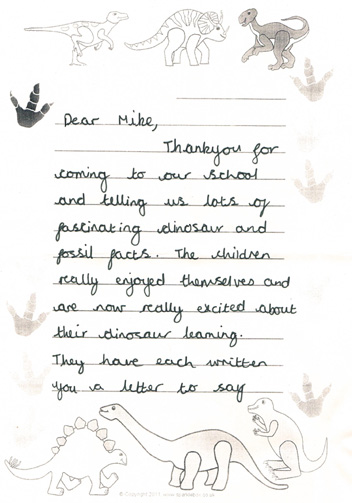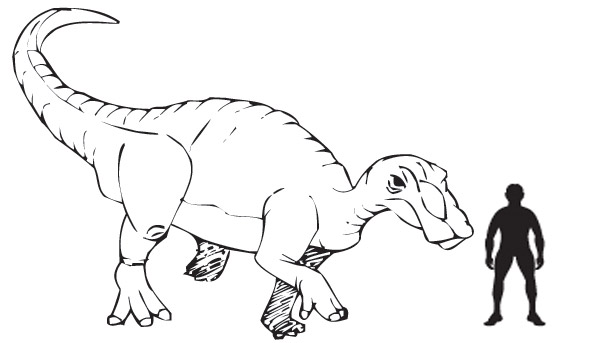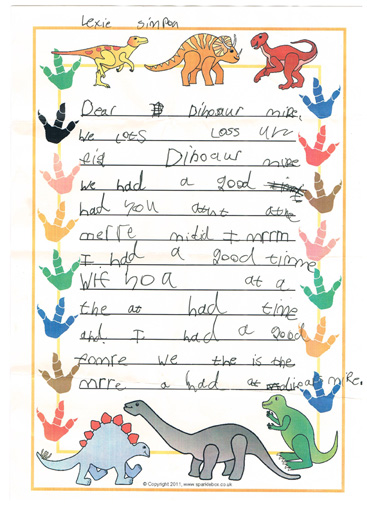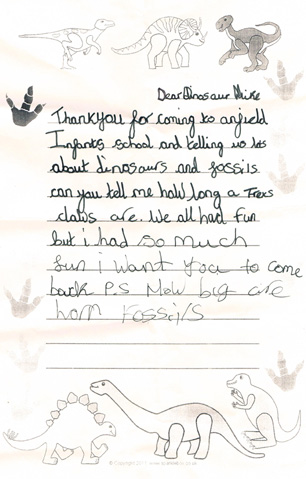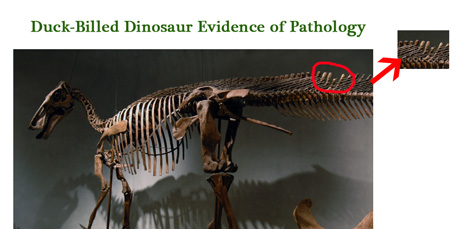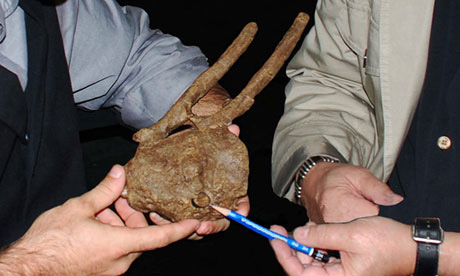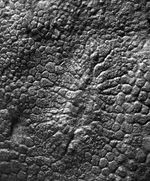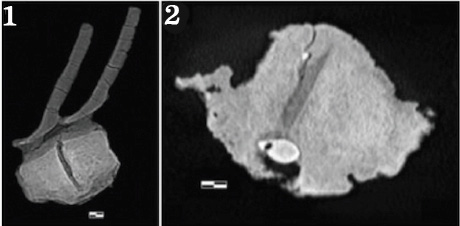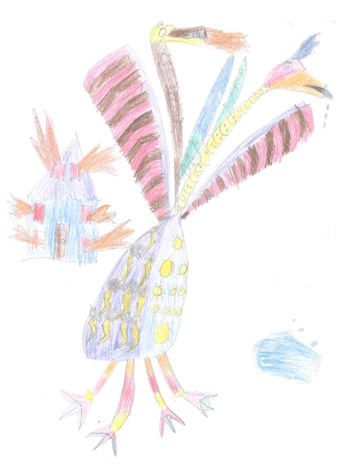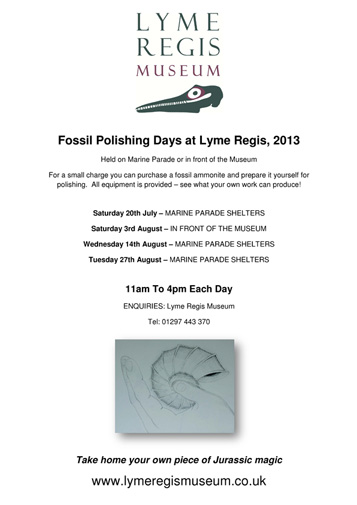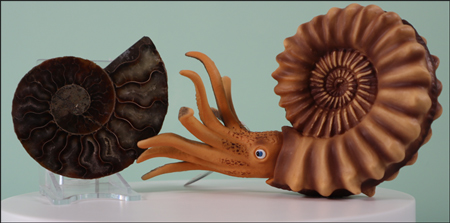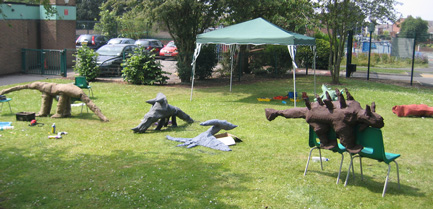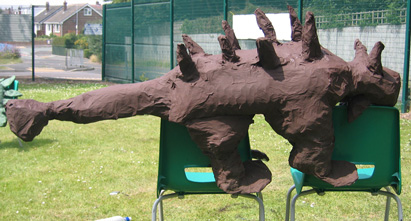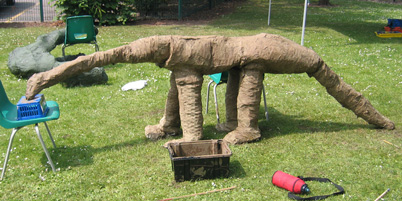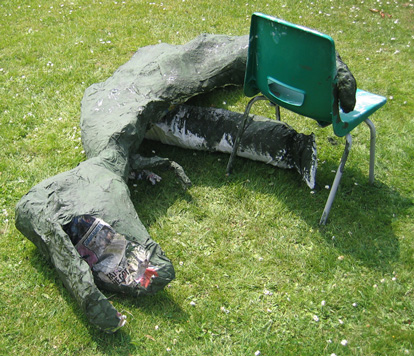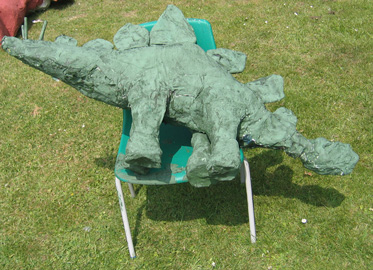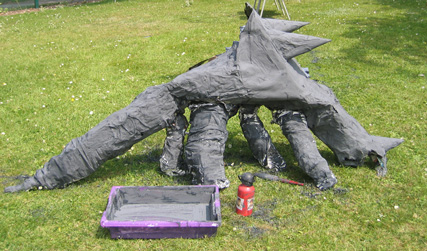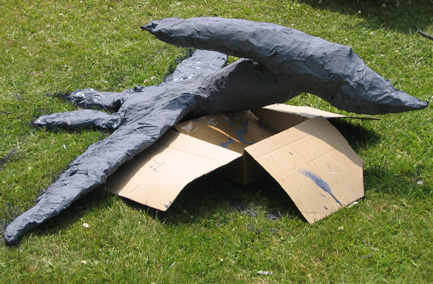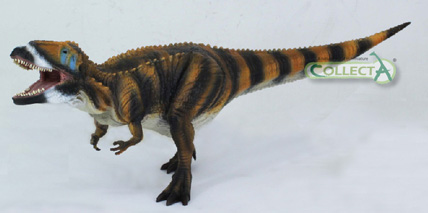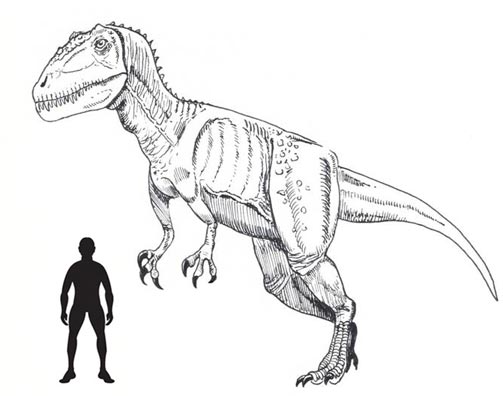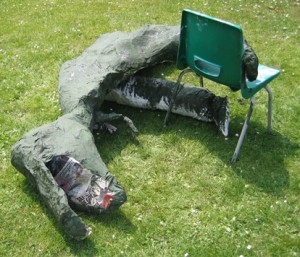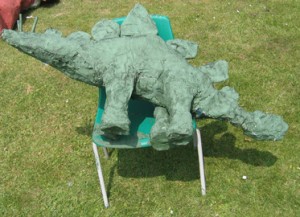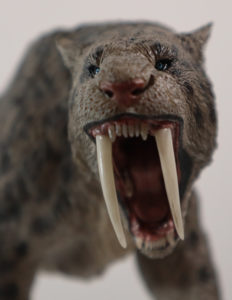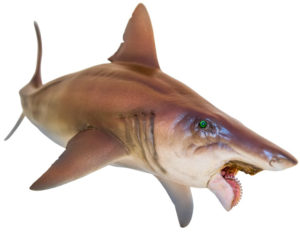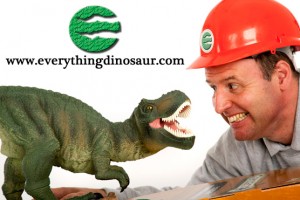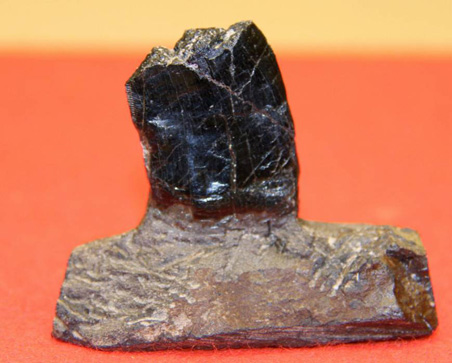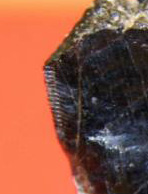Bright Sparks at Anfield Infants Demonstrate Their Dinosaur Knowledge
Thank you Letters and Questions About Dinosaurs from the Bright Sparks at Anfield Infants and Early Years School
A busy week for team members at Everything Dinosaur, but we always try to make time to respond to any letters we receive from school children after one of our visits to a school. Children at Anfield Infants and Early Years School (Liverpool, England), were studying dinosaurs this summer term and a member of the Everything Dinosaur staff was invited in to help the budding young palaeontologist with their prehistoric animal studies.
School Visit
Children in the “Bright Sparks” class were asked by the enthusiastic teaching team, Miss Ledgerton, Miss Hardcastle and Mrs Envis to write thank you letters to Everything Dinosaur and sure enough, our bulging mail bag was stuffed fuller than a Triceratop’s tummy.
Thank you Note from the Teaching Team
Picture credit: Anfield Infants and Early Years School/Everything Dinosaur
Setting an exercise such as this after a visit from one of our dinosaur experts is a great way to help young children practice writing skills and sentence construction. It also helps reinforce learning and the recall of information.
Thank You Letters
Amongst the many thank you letters we received, Christopher wrote that he liked looking at Ankylosaurus, whilst Jamie, Cameron and Jack were most excited about T. rex. They wanted to know why Tyrannosaurus rex is known as the “King of the Dinosaurs”? A very good question, the name T. rex means “Tyrant Lizard King”, when this fearsome dinosaur was formally described back in 1905, no one had ever seen such a frightening looking dinosaur before, the name was chosen as with its huge teeth and jaws, scientists at the time thought that this was the “King”. Ironically, T. rex was very nearly called Dynamosaurus, but that’s another story.
Joseph wanted to know when the first dinosaur bones were discovered? This is a tricky question, dinosaur fossils have been known about for a very long time, the legendary Chinese dragons may be based on scholars from China studying dinosaur bones. The first dinosaur to be scientifically studied and formally named in the west was Megalosaurus, a meat-eating dinosaur whose fossils have been found in England.
Everything Dinosaur
Lots of questions about dinosaurs teeth from the “Bright Sparks” of Anfield Infants and Early Years School, yes, Charlie you are right, some dinosaurs did have sharp teeth, whilst in answer to the question as to which type of dinosaurs had the most teeth we think a good contender would be the very big duck-billed dinosaur known as Edmontosaurus. This plant-eating dinosaur (herbivore) could grow to be over forty feet long and his mouth was lined with rows and rows of teeth all designed to help this Late Cretaceous dinosaur to grind up his food.
A Scale Drawing of the Very Toothy Edmontosaurus
Picture credit: Everything Dinosaur
A few questions on Brachiosaurus were also received. Brachiosaurus evolved a long neck so that it could feed on parts of trees that other plant-eating dinosaurs could not reach. Stephen wanted to know how tall Brachiosaurus was? Some scientists have suggested that the head of Brachiosaurus was held as much as 43 feet off the ground. This dinosaur was very heavy, it did weigh much more than an elephant, another super question, but how heavy it actually was is difficult to say, perhaps Stephen is right when he suggests in his thank you letter that some of these long-necked giants could weigh as much as 75 tonnes.
Thank you Letter From Lexie
Picture credit: Anfield Infants and Early Years School/Everything Dinosaur
Lots of Questions
Thank you for your colourful letters, Lexie, Poppy and Tilly. Indeed, we are grateful to all the children, their teachers and the teaching support staff for writing such lovely letters. We even had a question about the horns of Triceratops, they are quite big, the horn cores on the skull are only part of the horn. These would have been covered in a horny sheath that would actually have made them much bigger. Some of the large Triceratops skulls that we have studied come from dinosaurs that would have sported brow horns more than a metre long!
School Children Send in Thank you Letters to Everything Dinosaur
Picture credit: Anfield Infants and Early Years School/Everything Dinosaur
Thanks Caitlyn, we are glad you enjoyed holding the fossils, we give a big dinosaur roar in thanks for all the letters that we received. Sorry if we have not mentioned everybody but we do read them all and hopefully we have managed to answer the questions you posed.
Have a happy summer holiday.
To view the extensive range of dinosaur themed toys and games available from Everything Dinosaur: Dinosaur Themed Toys and Gifts.


